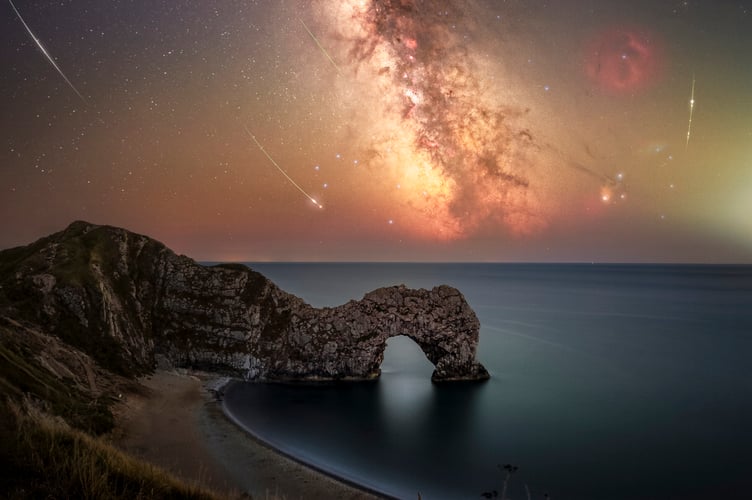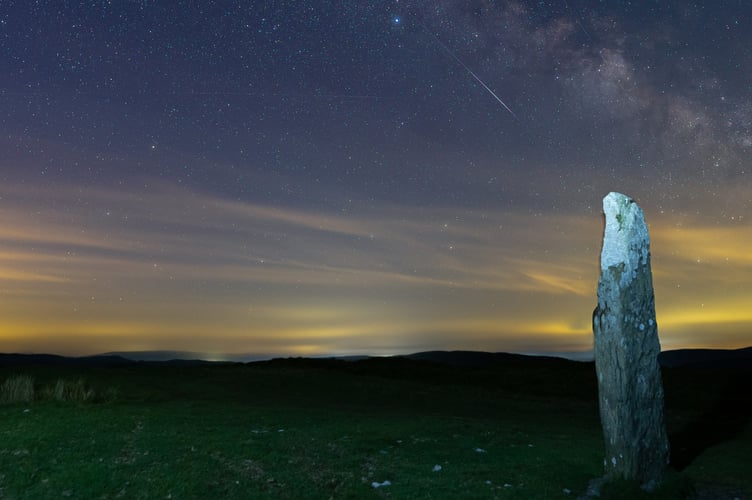Up to 100 meteors an hour will be visible in the night sky tonight as the Perseid Shower reaches its peak.
The astral display meteor shower is one of the most dramatic things to see in the night sky between July and August, and is a highlight of many meteor hunters’ calendars due to its high hourly rate and bright meteors.
In 2025 the Perseid meteor shower is active between 17 July and 24 August.
The shower will peak tonight, 12 August at around 9pm, but viewing could be tricky with a bright Moon in the sky.
Local astro-photographer, Dafydd Wyn Morgan, who will be heading out into the Cambrian Mountains with a group to try and capture the meteors on camera, says the best time to see the meteors will be just before sunrise because of the full moon, at around 2-3am.
The Royal Observatory has a useful guide on seeing the display.

What is the Perseid meteor shower?
As comets get close to the Sun, they heat up and pieces break off. If the debris ends up in the Earth’s path around the Sun, it can slam into our atmosphere at speeds of between 7–45 miles per second.
The actual speed at which a meteor enters our atmosphere depends on the combined speed of the Earth and the debris itself.
The average speed for a Perseid meteor is 36 miles per second. The air in front of the meteor is squashed and heated to thousands of degrees Celsius. The smaller meteors vaporise and leave behind a bright trail of light. Larger meteors can explode as fireballs.
How to see the Perseid meteor shower
You can look out for the Perseids wherever you are, but there are certain kinds of places that will increase your chances of spotting meteors.
Reduce the amount of light pollution in your field of view.
Areas such as the Cambrian Mountains and Eryri National Park are recognised dark sky areas and offer the best chance to see the meteors.
Give your eyes at least 15 minutes to adjust to the dark so that you can catch more of the fainter meteors – this does mean that you should avoid looking at your phone!
Meteors can appear in any part of the sky so the more of the sky you can see, the better. Find an area with a clear view of the horizon away from trees and buildings. Binoculars and telescopes are not necessary as they will restrict the size of the sky that will be visible to you.
The meteors will seem to originate from the constellation of Perseus. You can use a stargazing app to find the exact location you should look.
The showers are expected to be active throughout the night and for much of August, dwindling in strength.




.jpeg?width=209&height=140&crop=209:145,smart&quality=75)
Comments
This article has no comments yet. Be the first to leave a comment.